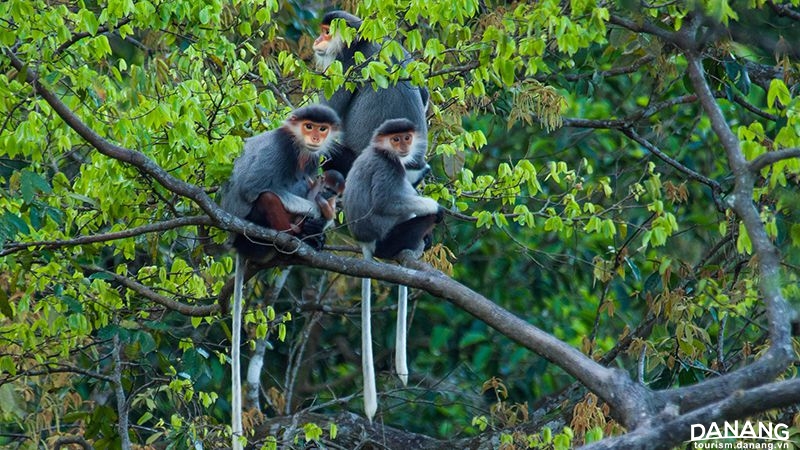Saving Son Tra Peninsula Ecosystem

Da Nang has three “special-use” forests which are home to endangered animals and plants. The Son Tra and Ba Na-Nui Chua natural conservations areas; and the Nam Hai Van landscape protection area occupy an immense 31,114.5 hectares, which is equivalent to 54.4% of the city’s overall forested area.
The Son Tra natural conservation area is of special interest because it houses a particularly large number of flora and fauna. Covering an area of 4,400 hectares, it has 1,000 species of plants and 300 wild animals. It has more than 300 red-shanked douc langurs. 37 of the total number are listed as “need-to-be-protected and priority” species.
But the establishment of 17 tourism projects filling up 1,029.6 hectares of the whole area has diminished and endangered the ecosystem, killing an alarming number of the rare animals and cutting down many trees in the forest. In 2015, three douc langurs were irresponsibly shot dead. In the first half of 2016, about ten hectares of the Son Tra forest was illegally cut down.
The tourism projects and activities are focused on the areas of Tien Sa, Suoi Om, Ho Sau and Bai Bac, causing massive forest destruction and disturbance in the habitat of the endangered langurs. It is recommended then that the Son Tra conservation area be recognized as a red-shanked douc langur conservation area and charge specific fees when entering to the peninsula. The Historical Science Association presented that the red-shanked douc langur be acknowledged as one of the city’s symbols, along with the suggestion to cease any and all additional tourism-related events in the place.
Efforts are encouraged instead on fortifying the protection of the conservation areas. And if tourism activities are deemed necessary for the economic development of Da Nang City, they should be controlled in such a way that they do not bring harm to the environment, instead foster security and further progress to the area.









